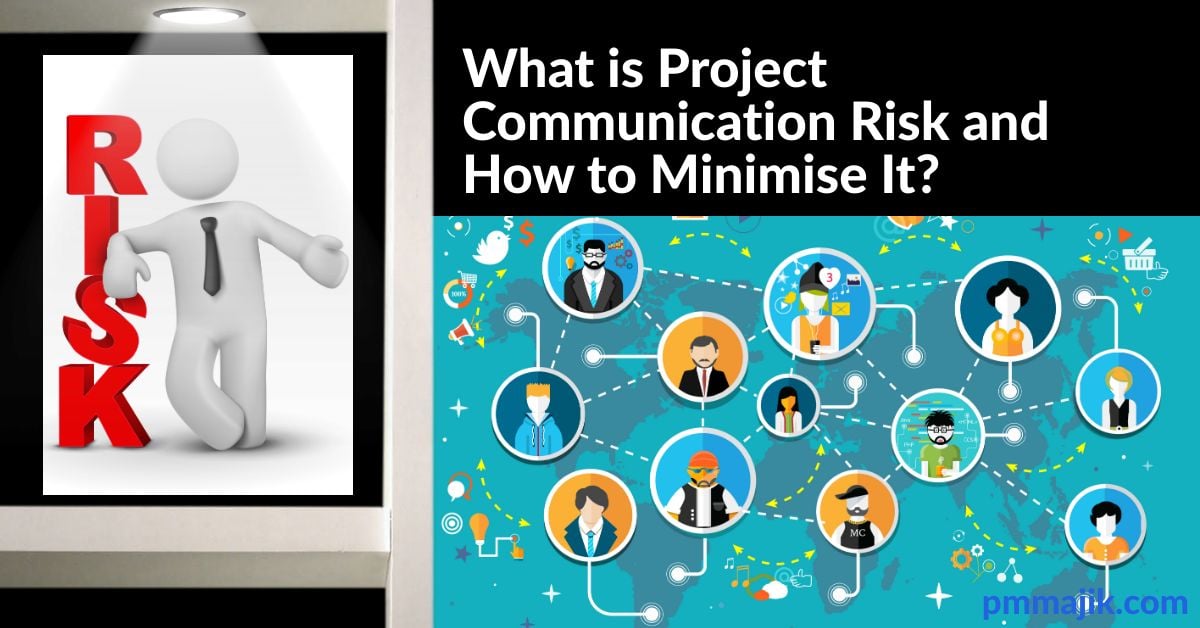Good communication is the bread and butter of a great project management office (PMO), but there is always risk involved in delivering a message. For each project that kicks off under your office, you need to assess what is the project communication risk and understand how to minimise it.
Communication isn’t just what your PMO and project managers say. It can be very much about how it’s said. There is a positive risk to communication, in that you can get it right, and there’s no need to make allowances for personalisation of the message – everything gets delivered as it should be.
As a seasoned PMO leader, you’ll know that it’s rarely the case. Here, we’re going to explore:
- What communication risk is
- How communication risk can affect your projects
- Ways you can minimise communication risks in your PMO
What is project communication risk?
Communication risk comes from the chance that the message you give and your project team receives goes awry. Getting your communications wrong can have a big impact on the project and its delivery.
The risk goes in two directions. It’s possible that a message can be misunderstood going into a project from stakeholders, such as unclear requirements. On the other hand, the message going from management to the project workers can get lost, resulting in incorrect deliverables.
From your PMO through to your project managers, you need to be communicating:
- The project plan
- Deadlines
- Requirements
- Deliverables
- KPIs
- Strategic value
In a coherent and strong way that leaves no room for error or interpretation.
It’s not as easy as it sounds. Get the communication of these issues wrong, and you can end up with mistakes being made, the project going in the wrong direction, more money being spent, and your teams feeling disengaged.
How to minimise communication risk in your PMO
Whilst communication risk can derail a project; there are tactics you can direct your managers to employ that should reduce problems. When completing the project risk assessment, be sure to build these activities into the project to improve communication efforts.
Know your communication tools
Having the right communication tools can go a long way to getting the right message across. Ensuring that the same information is delivered and stored in the same way each time will mean everyone working on projects will know where to turn to get up to date communications.
Having set tools for specific tasks, especially for remote project workers, will streamline messaging.
Know your audience
Some teams are relaxed and enjoy some humour with their communications, whilst other teams need a straight-faced briefing. The risk of getting this wrong is disengaged staff who don’t buy into the project.
Make sure your project managers know how to read their teams. It’s also important to assess language differences and ensure that nothing literally gets lost in translation. Multiple languages on a team can be a major source of risk that is easily mitigated with good translation and simple checking of understanding.
Know your stakeholders
The project under your PMO needs to be able to receive communication, too. There is a risk that a stakeholder or client may not know where or how to direct feedback or concerns. This can lead to dissatisfaction at the end of the project.
Project managers need to foster relationships with stakeholders, providing updates and requesting feedback. Having a strong feedback loop built into projects should ensure a deliverable that keep everyone happy.
Know your goals
With each major communication, your project managers need to set goals. During communications such as:
- Briefings
- Email blasts
- Scrums
- One-to-ones
- Strategy meeting
- Project reviews
The end result needs to be understood. Whatever message needs to be delivered must be clearly understood.
Not only will understanding the message ensure that it’s delivered properly, it will help direct which communication method to use which keeps staff engaged.
Be positive
The way a message is delivered will affect how it is understood. The tone of the email, blog post, video, or meeting should be upbeat and focus on the future. This will keep projects moving forward and prevent too much time from being lost due to employee dissatisfaction or engagement.
The take-home
Knowing what project communication risks are and how to minimise them will keep your projects running smoothly and your people engaged. Our five things you need to know to reduce the risk of poor communication will ensure that everyone gets the right message, first time.






